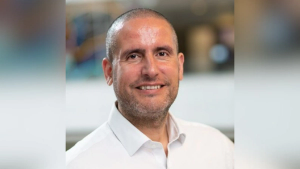|Articles|April 14, 2022
Trial Master File Insights
Remote inspection and ICH guidelines among topics discussed at Veeva's most recent TMF Innovation Forum.
Advertisement
Fran Ross, consultant and TMF Reference Model Steering Committee member, spoke at Veeva’s TMF Innovation Forum in March, delivering insights from global health authorities around risk-based trial management and how that applies to TMF management. The following is a summary from the transcript from the event.
Remote inspections
The International Committee of Medicines Regulatory Authority (ICMRA) released “Reflections on the regulatory experience of remote approaches to GCP and GMP regulatory oversight during the COVID-19 Pandemic” in November 2021. The position paper focused on adaptive processes, adaptive responses, and firm line on which inspections were most critical to human health, what inspections were most critical to quality, what inspections really had to be accomplished on site, and what inspections could accommodate a remote or hybrid modality.
Takeaways from the health authority perspective is remote or hybrid inspections will take more time to prepare and execute. Most problems revolved around the “start and stop” inspection workflow, ie., request records, records delivered in some electronic fashion, review records, get back with the inspectees, ask questions, get more records. Another was the lack of human interaction, ie., not everyone in the same room at the same time, or at a physical distance. Maintaining a flow of conversations or again, the flow of the discussions. And finally, was the fact that some health authorities have much less virtual or remote inspection experience than others.
Despite the fact that these were more challenging inspections, the results of the inspections haven't changed. There were no less FDA 483s, no less or more amounts of findings from the health authorities. So the takeaway is that there is a new landscape of face-to-face, hybrid and potentially virtual inspections--so prepare for all of them.
ICH E8 (R1)
The impact on TMF management to ensure that actions of the trialists and the medical monitors are being recorded in the TMF. That there are risk management plans for all studies, risk assessment artifacts, and that quality by design and critical to quality assessments are conducted, those different records can be found and secured in the TMF.
ICH E6 (R3)
Expectations that the draft of ICH E6 (R3) will be revealed in the third quarter. Rather than soften their demands on risk based trial management, it appears there will be more focused in making industry more responsive to risk based approaches and more focused on quality by design. From a TMF perspective, the expectation is that the artifacts proving that risk-based management and quality by design has been attended to.
EU CTR (536)
EU CTR (536) went into effect January 2022, and very impactful for study startup. The regulation mandates that if you are conducting a trial in any European country, approval for all of those countries is delivered as a single CTA. Ross believes that artifacts called out in 536, can be slotted within sub-artifacts that are already identified in the TMF Reference Model. So there shouldn't be any major change from TMF operations.
TMF Reference Model and CDISC
TMF Reference Model is likely to join CDISC before the end of 2022. Ross reiterated that the steering committee members are very excited about this transformation “because the reference model has been a volunteer community effort since it's inception. And we really need to have more technology support to make the tool more robust, more available and move it closer to an industry standard that everyone can rely on.”
To that end, Ross maintained that CDISC understands the stance that the reference model itself has to remain freely available, as well as the artifacts, or related items including the exchange mechanism and the TMF plan also remain freely available.
Key takeaways
- While running mock inspections, make sure you include a thorough test of the remote access capabilities. And the health authorities are asking to make sure that you've got sufficient, fully available tech support and fail safe plans, if there's any technology or bandwidth hiccups.
- Focus on TMF fundamentals regardless of the inspection modality. The TMF must be timely, accurate, and complete.
- Ensure the completeness is supported by metadata from your eTMF systems, and by those who have completed the trial are giving you insights to the trial study stories.
- Components of building a risk-based TMF management approach are straightforward, but include:
- Stratification of where risks exist
- Where are the records and processes that are highest risk to being able to conquer inspection?
- Plan the measurement of those high risk records and processes
- Develop and activate a TMF risk management plan.
- Include a change management plan to ensure the entire trial community is behind the new risk management plan.
- Measure those impacts and once data is in hand, assess how it went.
Ross said, “At the end of the trial, all the time, all the money, all of the efforts of all of the trialists have been culminated down into what we maintain as TMF record. And t's time for us, as an industry, to make sure that the stakeholders understand how critical this record set is. And then we do it right, we do it right once, and we do it right the first time.”
Newsletter
Stay current in clinical research with Applied Clinical Trials, providing expert insights, regulatory updates, and practical strategies for successful clinical trial design and execution.
Advertisement
Related Articles
 Q&A: Strategies for Successful Global Clinical Trial Delivery
Q&A: Strategies for Successful Global Clinical Trial DeliverySeptember 12th 2025
 How Recent Policy Changes Could Impact Clinical Research
How Recent Policy Changes Could Impact Clinical ResearchSeptember 10th 2025
 eClinical Technology: Misconceptions, Challenges, and Opportunities
eClinical Technology: Misconceptions, Challenges, and OpportunitiesSeptember 9th 2025
 What Resilient Trial Design Means for Clinical Teams
What Resilient Trial Design Means for Clinical TeamsSeptember 2nd 2025
Advertisement
Advertisement
Trending on Applied Clinical Trials Online
1
Phase III BRUIN CLL-313 Trial Finds Jaypirca Extends Progression-Free Survival in Treatment-Naïve CLL/SLL
2
Q&A: Strategies for Successful Global Clinical Trial Delivery
3
ACT Brief Episode 8: Expert Insights on the Future of Obesity Drug Trials
4
Trial Data Leads to NCCN Recommendation for Modeyso in Recurrent High Grade Glioma Patients
5




.png)



.png)



.png)
.png)
